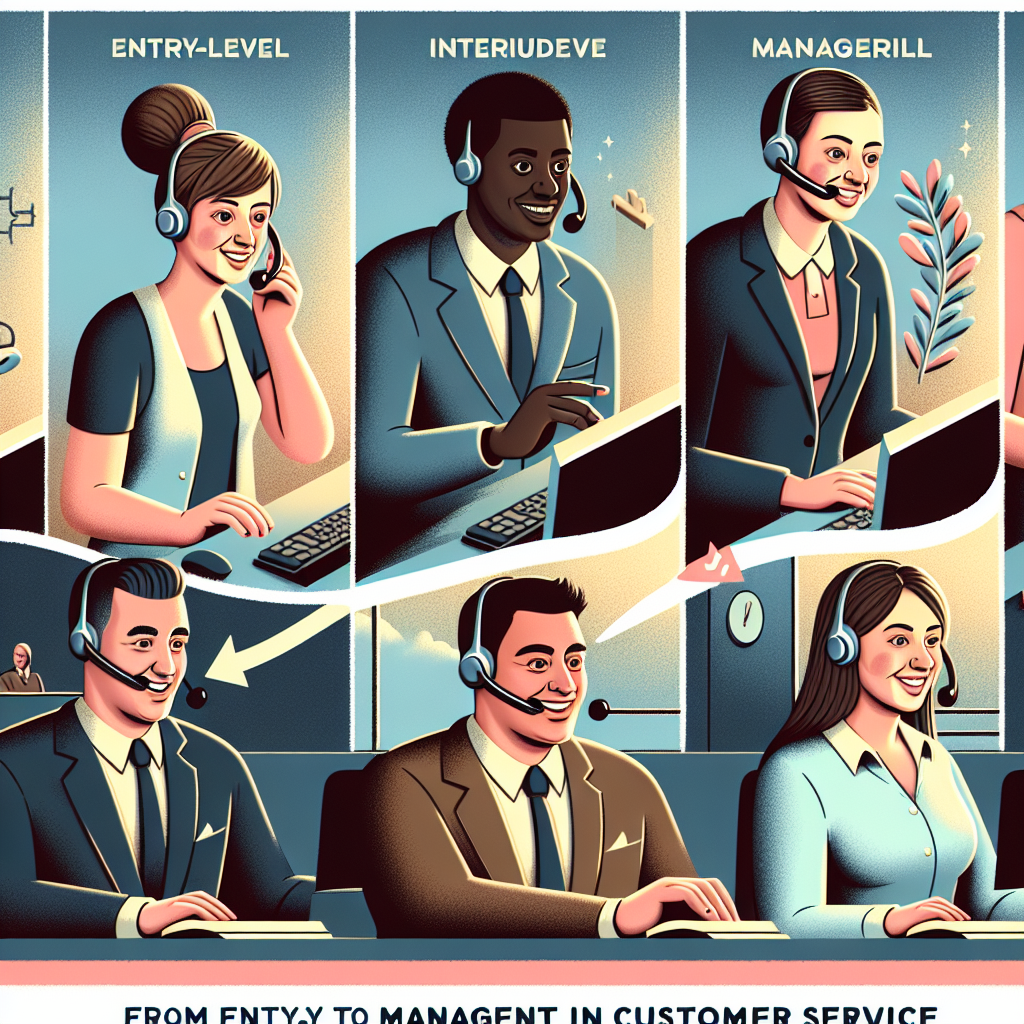Customer service is more than just a department; it’s a crucial component of any successful business. As organizations increasingly recognize the importance of nurturing strong relationships with their customers, they also appreciate the value of a well-structured career path in customer service. The transition from entry-level positions to management roles can be both rewarding and fulfilling, paving the way for personal growth and professional development. This article explores various career paths in customer service, highlighting opportunities, skills needed, and steps to advance.
1. Understanding Entry-Level Positions
Entry-level positions in customer service typically involve direct interaction with customers to assist with inquiries, resolve issues, and ensure satisfaction. Common roles include:
- Customer Service Representative (CSR): Often the first touchpoint for customers, CSRs handle inquiries via phone, email, or chat. They possess product knowledge and excellent communication skills.
- Help Desk Technician: Focused primarily on technical support, help desk technicians assist customers with troubleshooting issues, often requiring specialized knowledge about products or software.
- Sales Associate: In retail environments, sales associates engage with customers to drive sales while also addressing any concerns or questions.
These roles are essential for building foundational skills in communication, problem-solving, and customer empathy.
2. Developing Skills for Advancement
To move up the career ladder, entry-level employees must cultivate both hard and soft skills. Essential skills for advancement include:
- Effective Communication: The ability to articulate ideas clearly and compassionately is critical in customer interactions.
- Problem-Solving: Being resourceful and capable of resolving customer issues efficiently can help distinguish an employee from their peers.
- Empathy: Understanding customer emotions and responding appropriately fosters trust and loyalty.
- Technical Proficiency: Familiarity with customer relationship management (CRM) systems and other technology can aid in day-to-day operations and enhance efficiency.
Training opportunities, workshops, and ongoing performance evaluations can help employees refine these skills, setting them up for future roles.
3. Progressing to Mid-Level Positions
After gaining experience and developing key skills, customer service representatives may transition into mid-level roles. These positions often include:
- Customer Service Supervisor: In this role, individuals oversee a team of representatives, ensuring that customer service standards are met, and providing coaching and feedback.
- Team Lead: Team leads directly manage customer interactions and are responsible for motivating their team, problem-solving on the fly, and ensuring customer satisfaction metrics are achieved.
- Quality Assurance Specialist: They assess and evaluate the interactions between representatives and customers to ensure service quality and compliance with company policies.
These positions provide a platform for developing leadership skills, strategic thinking, and the ability to handle more complex customer situations.
4. Climbing to Management Roles
For those who aspire to higher management positions, a commitment to continuous learning and development is key. Management roles in customer service can include:
- Customer Service Manager: Responsible for the overall operation of the customer service department, managers set goals, implement policies, and spearhead training initiatives.
- Director of Customer Experience: This role involves overseeing the entire customer journey, creating strategies to enhance satisfaction, and gathering insights to inform future initiatives.
- Vice President of Customer Service: This executive role focuses on strategic planning and leadership at a higher level, aligning customer service operations with business objectives.
Aspiring managers should seek mentorship, pursue relevant certifications, and engage in networking opportunities to grow their professional network and industry knowledge.
5. Keys to a Successful Career in Customer Service
While the path from entry-level to management can be rewarding, a few key strategies can enhance the journey:
- Seek Feedback: Regularly solicit constructive feedback from supervisors and peers to identify areas for improvement.
- Embrace Continuous Learning: Attend workshops, webinars, and industry conferences to stay updated on trends and best practices in customer service.
- Build a Professional Network: Connecting with professionals in the field can lead to mentorship opportunities, job referrals, and partnerships that enhance career prospects.
- Set Clear Goals: Clearly defined career goals will help you remain focused and motivated throughout your journey.
Conclusion
The customer service sector offers a diverse range of career paths, each ripe with opportunities for growth and development. By progressing from entry-level roles to management positions, individuals can harness and expand their skill sets, making significant contributions to their organizations while building fulfilling careers. With patience, dedication, and a proactive approach to learning, anyone can navigate the path from customer service representative to management, ultimately becoming a vital pillar of their company’s success.




